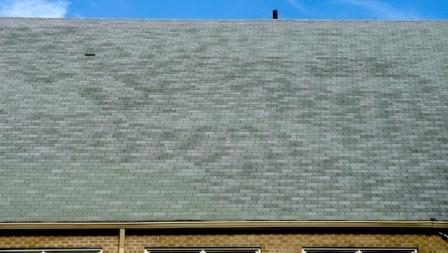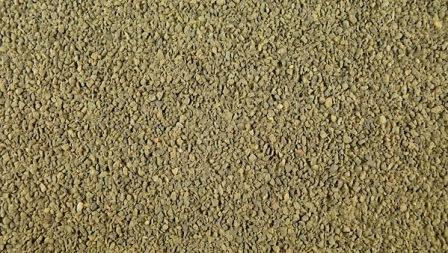Mastering Roof Inspections: Asphalt Composition Shingles, Part 36
by Kenton Shepard and Nick Gromicko, CMI®
Storing shingles improperly can cause aesthetic issues or problems that can shorten the life of the shingles. Some of the problems include:
- staining, which can happen when bundles have been stacked too high. The weight of the bundles on top can cause light oils to be released from shingles lower in the stack;
- bundle distortion, which is caused by stacking bundles unevenly; and
- sticking. Exposure to excessive heat and pressure can cause stacked shingles to stick to each other.
COSMETIC ISSUES
Let's examine in more detail the ways in which granules and the manufacturing process relate to cosmetic issues. Cosmetic issues may affect the way something looks but not how well it functions. Insurance companies typically don’t pay for cosmetic damage to roofing.
Visual Issues
Most visual problems with asphalt shingles are related to granules. Problems with color are often simply the way that granules reflect light. This can be caused by variations in the manufacturing process, or by improper installation or storage. Shingles are seldom seriously affected by these kinds of problems and are almost always able to perform properly over their expected service life.
Shingle Colors

The layer of granules on shingles actually consists of granules of different colors which, from a distance, appear to be a single color. The manufacturing process embeds granules with their surfaces exposed to light at different angles.

The light reflected from shingles with only one granule color won’t be reflected uniformly, so the color may appear to vary.

Installing three to five different granule colors on each shingle helps solve this problem by making them appear, from a distance, to be one color.
Mixing Shingle Lots
Lot numbers are used by manufacturers to keep track of production and color information. Shingles used on a roof should be of the same lot number, or the colors may not blend well.
For this reason, spot repairs to asphalt shingle roofs can be difficult to make without the repair being obvious to the eye.

Differences in shingle colors may also be the result of installers using shingles with different lot numbers or color codes, as you see here. You can see at least three different shades here, with most of the color differences following the offset installation pattern.
Oil and Dust
Color change sometimes takes place as granules on newly installed shingles lose the light coating of oil that was applied at the manufacturing plant. This is done to reduce airborne dust. Oil changes the way granules reflect light. So, as the granules weather away, the roof color will appear to change slightly.


Dust accumulating on the granules will have a similar effect.
MANUFACTURING VARIATIONS
Granule Tilt
During the manufacturing process, granules are deposited onto a moving strip of asphalt-covered mat. The speed of the moving strip causes granules to be deposited so that they’re slightly tilted.
Depending on the width of the machine, shingles are usually cut into opposing pairs, which are turned during packaging. If the granule tilt is extreme, light may reflect off these pairs differently, making them appear to have color differences.
Machine-Speed Granule Tilt
Variations in the speed of the shingle strip can affect the angle of granule tilt. Faster speeds cause granules to tilt more. Granules that tilt differently reflect light differently. So, if shingles with granules of different tilts are installed next to each other, they can appear to have color variations.
Machine-Speed Granule Blend
Variations in the speed of the shingle strip can also affect the concentration of the color blend. Higher speeds tend to mute colors.
If the color blend is not consistent throughout a production run, the shingle color may vary significantly. If bundles from different parts of the run are applied next to each other, the difference may be obvious.
Granule Sizing
Apparent color variations can also be caused by variations in the ratio between coarse and fine granules. Coarser granules reflect light differently, so variations in gradation will appear as color anomalies.
Granule Embedment
After granules are deposited on the strip, the strip revolves around a drum that presses the granules into the surface of the hot asphalt. The pressure needs to be precise. If too little is used, granules can loosen and fall off. Too much pressure will embed granules too deeply. If granules are embedded too deeply, asphalt can bleed to the surface, leaving stains.
Granules that are either over- or under-embedded can cause differences in appearance, especially if shingles with opposite problems are installed side by side.
Mixing Algae and Non-Algae-Resistant Shingles
**************************************************
Learn how to master a roof inspection from beginning to end by reading the entire InterNACHI series: Mastering Roof Inspections.
Take InterNACHI’s free, online Roofing Inspection Course
Mastering Roof Inspections
Roofing Underlayment Types
Inspecting Underlayment on Roofs
Fall-Arrest Systems
Roofing (consumer-targeted)
More inspection articles like this

